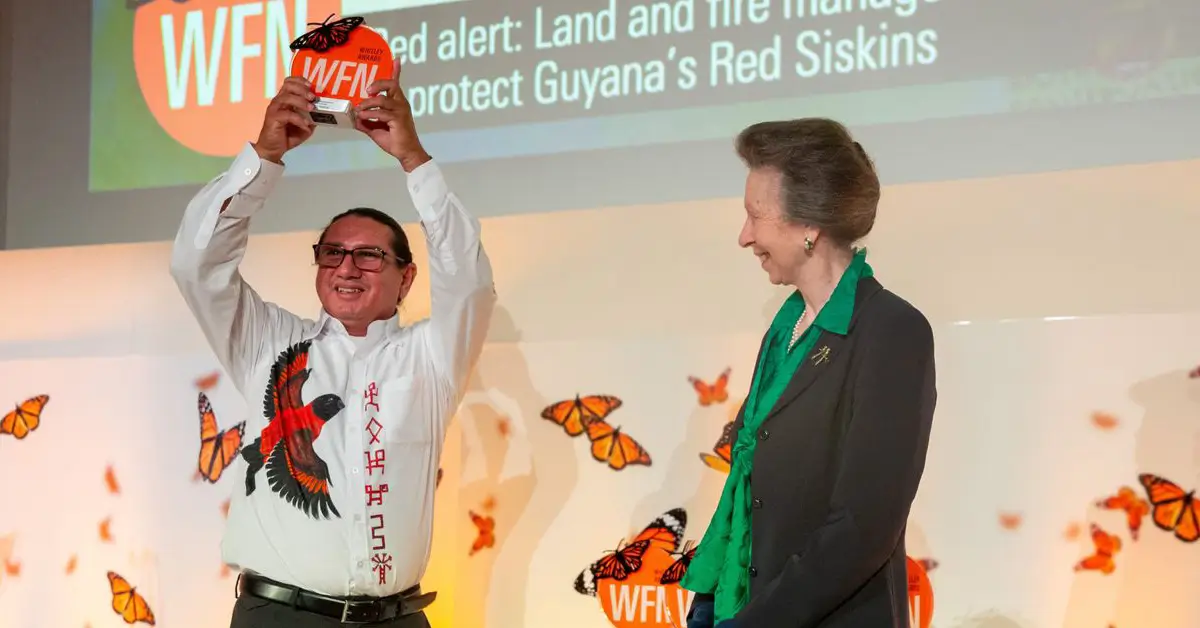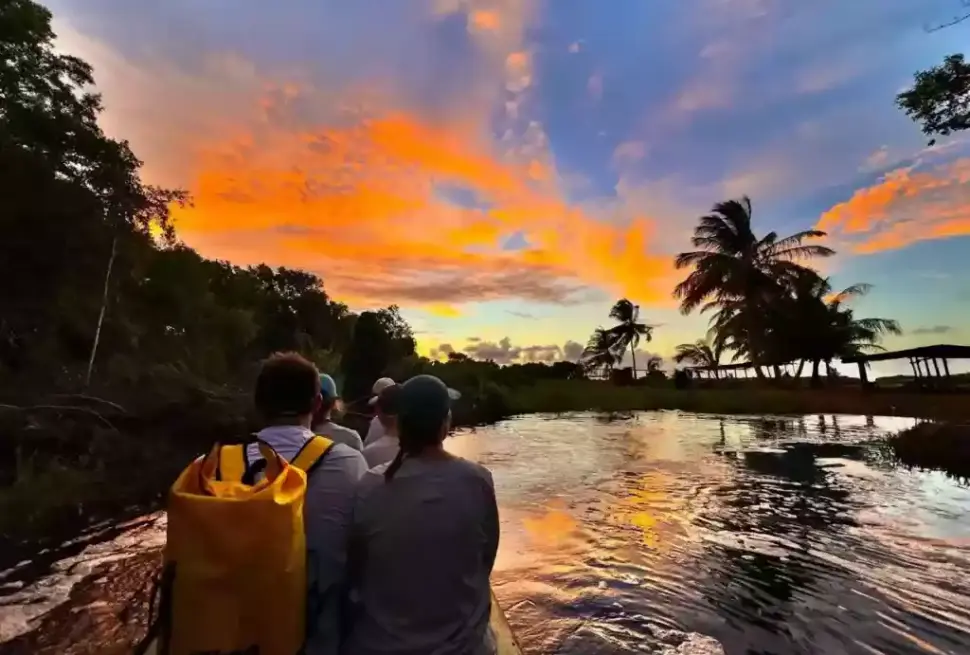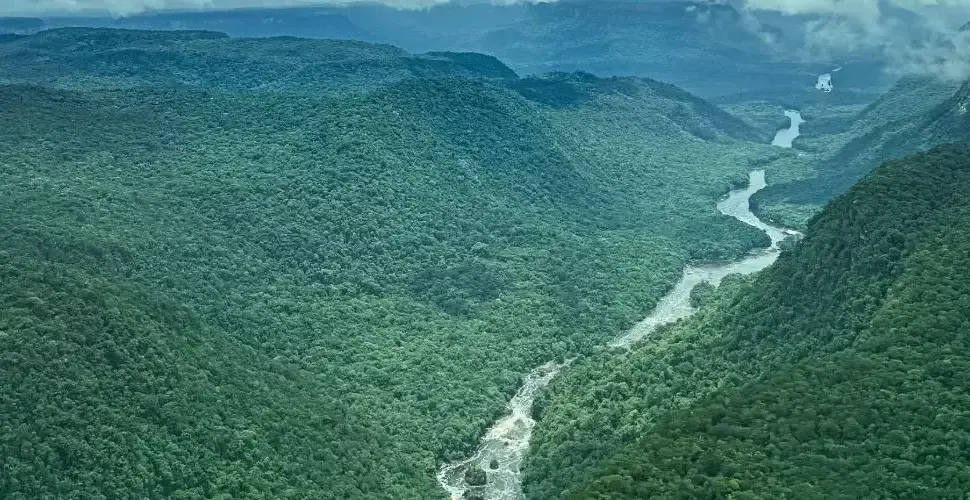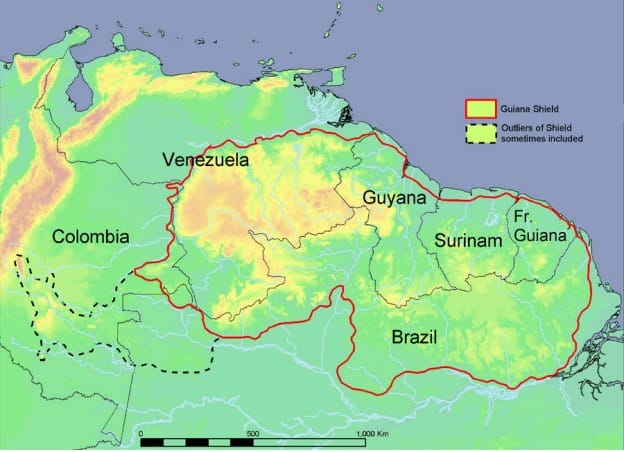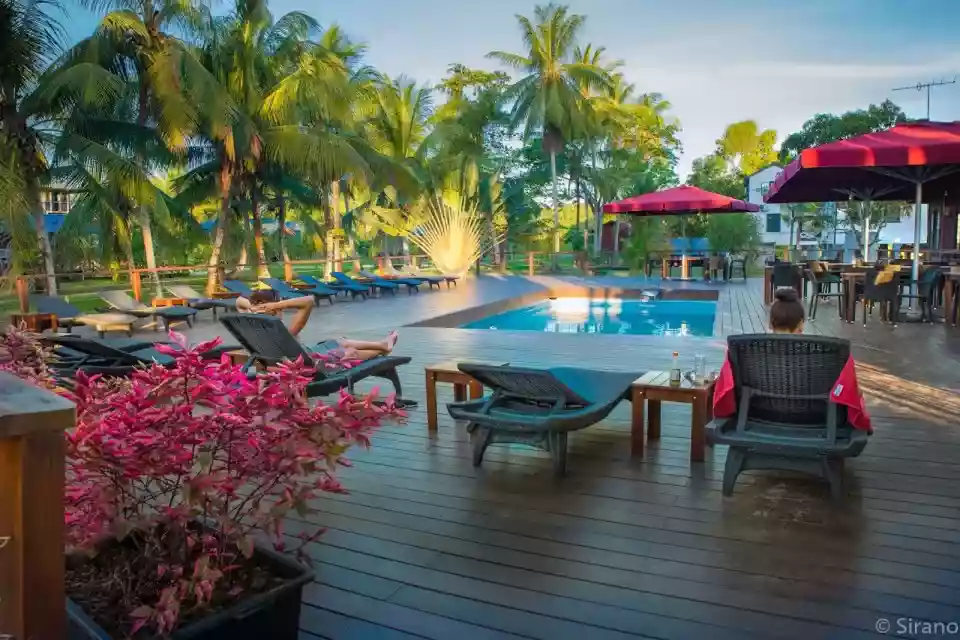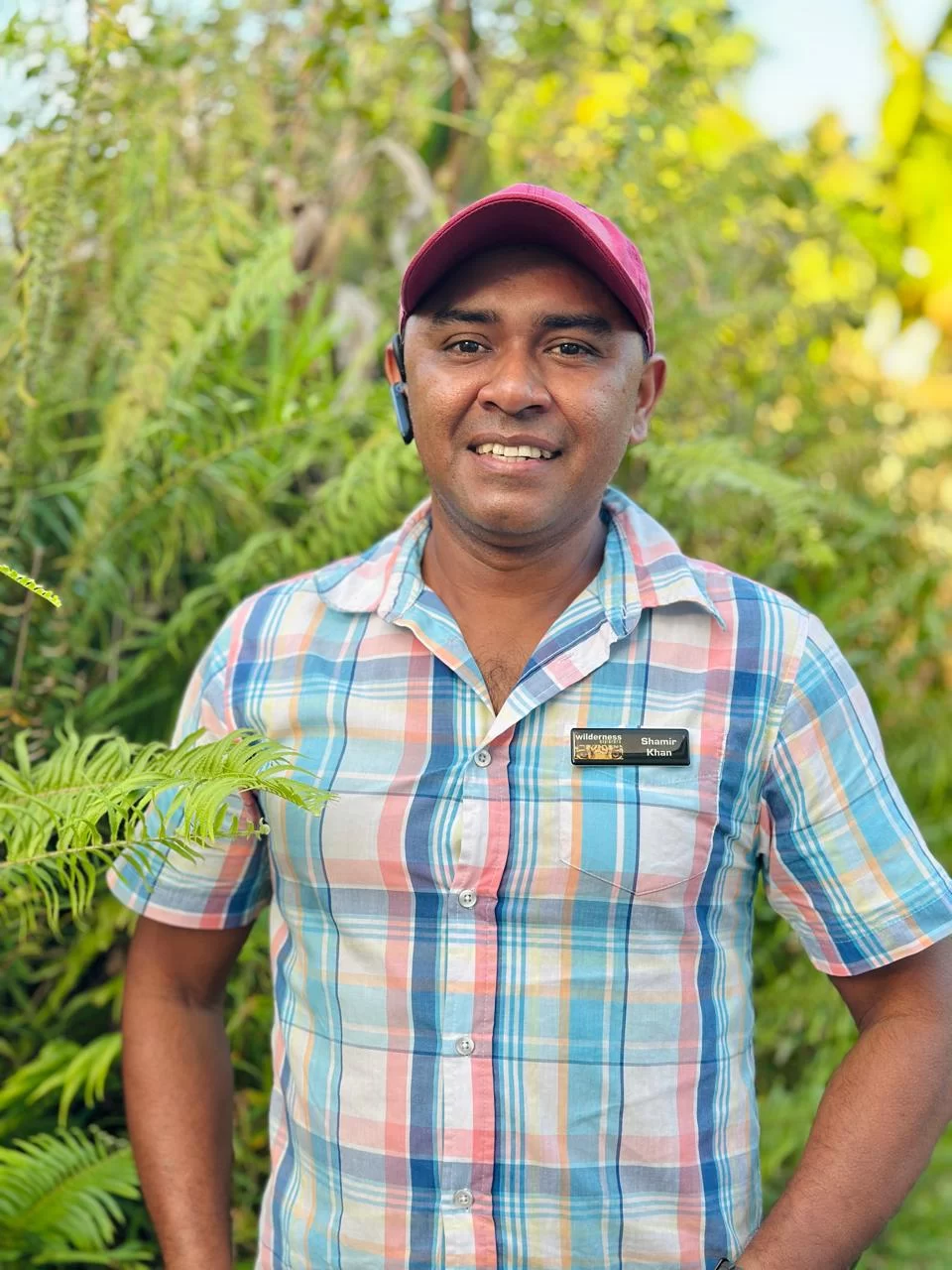Historical Overview of Red Siskin
Once prevalent in the early 20th century, The Red Siskin (Carduelis Cucullata) has experienced a dramatic decline, resulting in a highly fragmented distribution. This species is currently classified as endangered, primarily due to the detrimental impact of the pet bird trade, which involves the capture and removal from bird populations. Recent observations in southern Guyana, however, have provided evidence of ongoing reproductive activity, with both female and male individuals observed participating in chick provisioning at active nests recorded in 2017.
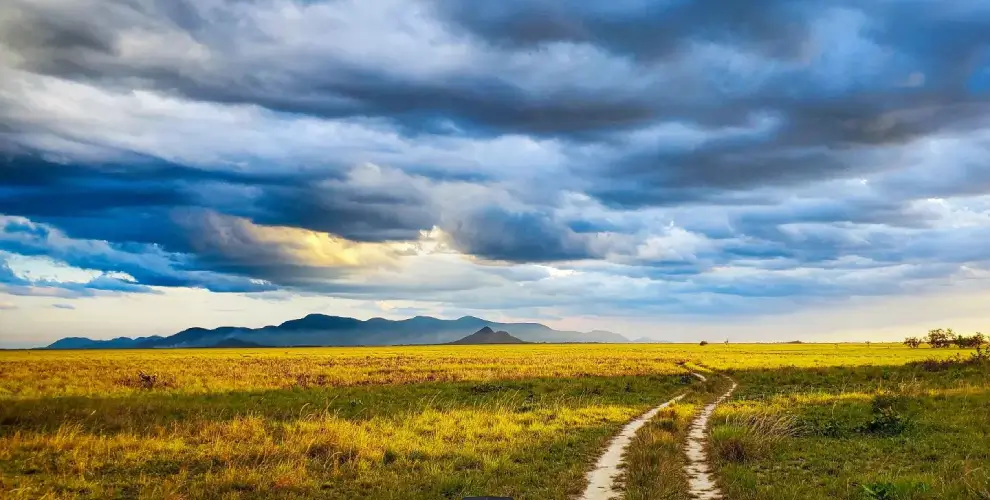
Environmental Impact
The Environmental Protection Agency (EPA) in Guyana has designated South Rupununi Conservation Society (SRCS) as the lead agency for the protection and conservation of the Red Siskin, with the organisation conducting research and educational work in partnership with local communities.
The esteemed organisation based in the United Kingdom, the Whitley Fund for Nature (WFN), has bestowed a Whitley Award upon Leroy Ignacio, a native of Rupununi, Guyana. This award recognises his extraordinary efforts in spearheading an Indigenous-led conservation movement and safeguarding the endangered Red Siskin. This diminutive finch has become a symbol of conservation in Guyana, a nation undergoing rapid transformation.
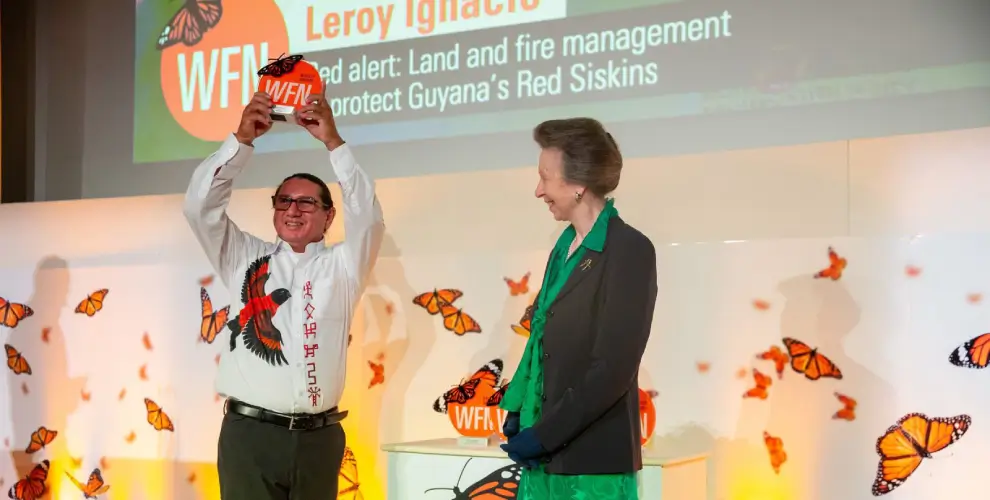
Scientific Recognition
“This remarkable bird has ignited a conservation movement right here in Rupununi,” Leroy stated.
Sir David Attenborough, WFN Ambassador and a long-time supporter, praised the growing network of award recipients, highlighting their ability to address critical issues while engaging communities and broader audiences. Attenborough proclaimed, “When I hear this bird, it just hits my heart. Leroy could see that by protecting the Red Siskin. He also had an opportunity to help preserve the Rupununi’s Carduelis Cucullata (the Red Siskin), working with local communities, Leroy and others formed the South Rupununi Conservation Society.”
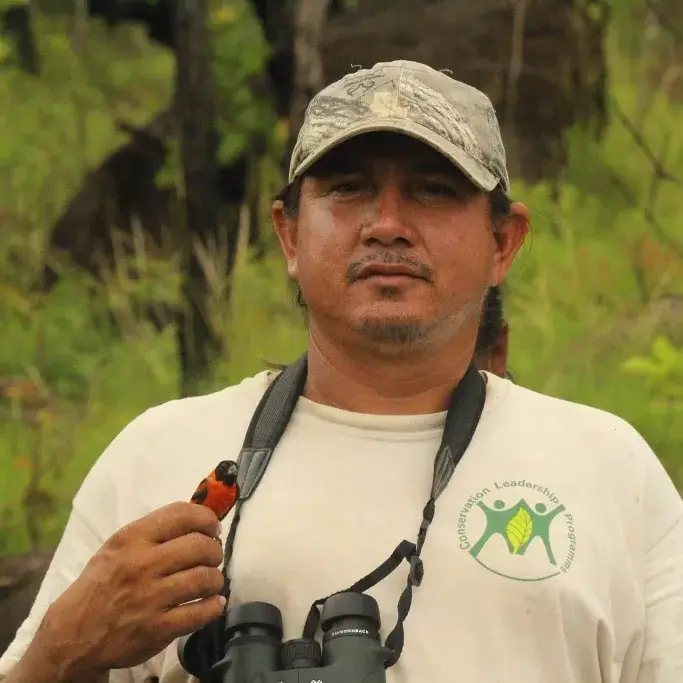
Leroy, a member of the Indigenous Makushi community, and his team are at the forefront of monitoring the Red Siskin. They played a vital role in securing legal protection for the bird after its “scientific” discovery in Guyana in 2000, an event in which Leroy and local indigenous community members and international scientists participated. Leroy clarified that the Red Siskin was “scientifically” discovered, but local people were already aware of the bird.
This discovery inspired the establishment of the 75,000-hectare Red Siskin Community Managed Conservation Zone, a collaborative effort involving five Indigenous communities. This pioneering initiative, located on their ancestral lands, has become a model for other communities and has attracted eco-tourism to the remote region.
“Through the Whitley Award, we aim to elevate the recognition of Indigenous peoples who collaborate with international researchers and demonstrate their capacity to lead their own research and conservation endeavors,” Leroy emphasized.
The South Rupununi region, characterized by grassland savannahs and forests, is home to the Wapichan, Makushi, and Wai Wai Indigenous peoples, representing 57 communities. Most residents practice subsistence farming, fishing, and hunting. Historically, the region has experienced minimal deforestation.
Guyana harbors the only significant wild population of the Red Siskin outside of Venezuela, where its numbers have drastically declined due to the wild bird trade. Historically called “cardenalitos” in Venezuela, its feathers were used to adorn hats, and it was hunted to crossbreed with canaries for a red variety.
Indigenous Knowledge
Leroy’s SRCS is now focused on enhancing the monitoring, management, and sustainability of the conservation zone, addressing threats such as trapping and habitat loss from wildfires. With his team of rangers, including third-generation members, Leroy will strengthen protection for the Red Siskin’s remote habitat through active habitat management and controlled burning of wildfire-prone areas around Red Siskin hotspots, while collaborating with communities and the government for co-management. Leroy’s team also aims to secure financial support for broader wildlife preservation, encompassing species like giant anteaters and giant armadillos.
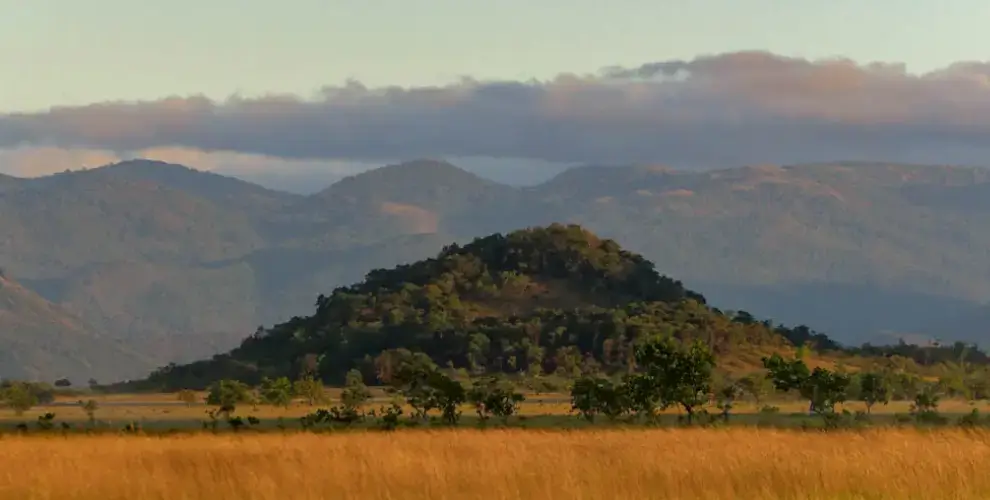
Guyana is particularly vulnerable to climate change, facing risks of droughts and floods. According to the World Bank, nine out of ten people reside along the coastline, with some areas lying two meters below sea level.
Leroy Ignacio: A Rupununi Trailblazer
Leroy Ignacio leads the South Rupununi Conservation Society (SRCS) in Guyana, which is dedicated to protecting the endangered Red Siskin. With consistent support, he established a 75,000-hectare conservation zone, achieved through collaboration with local Indigenous communities to deliver conservation education and engagement programs.
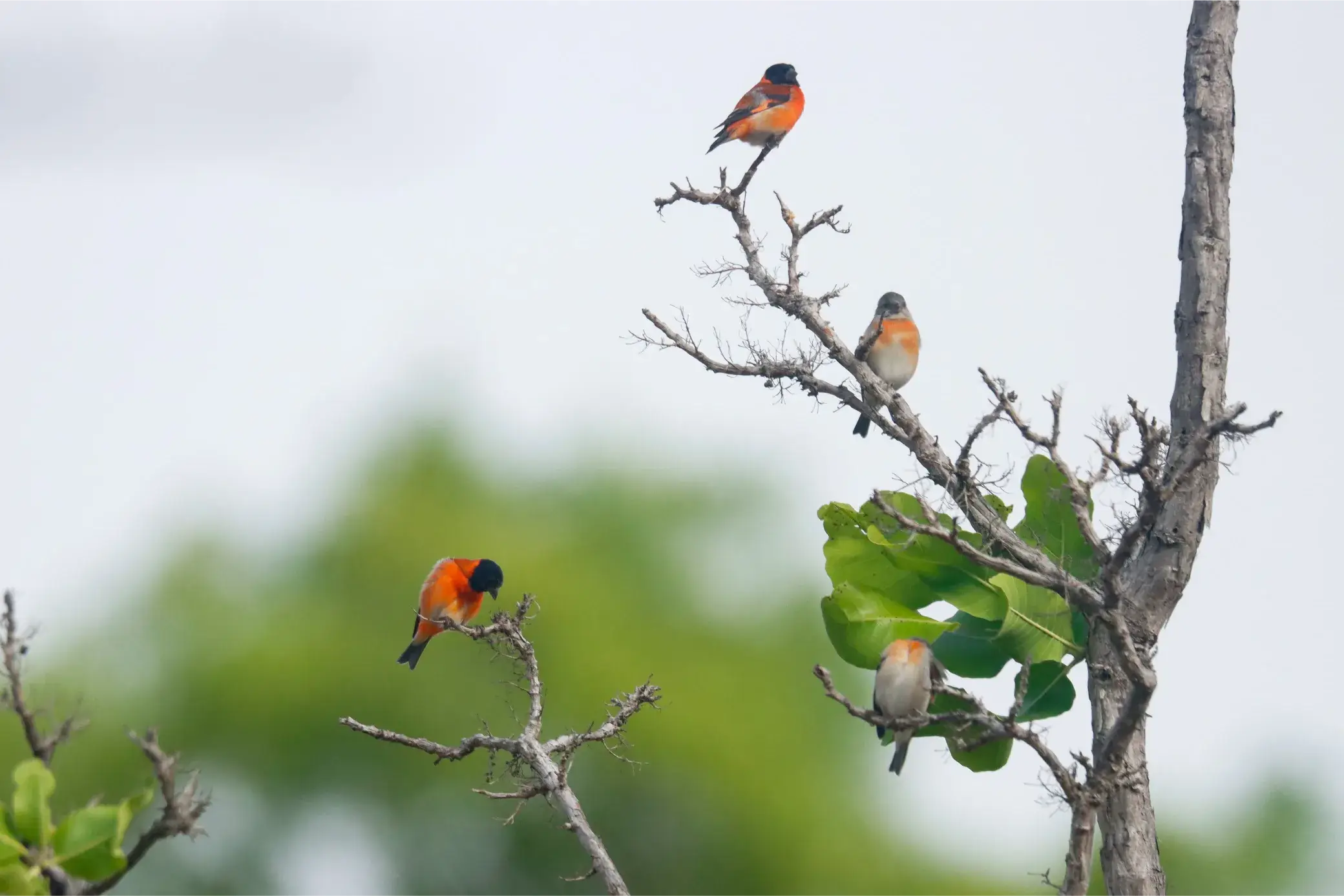
Leroy Ignacio and SRCS have successfully curbed illegal capture and stabilized Red Siskin populations. According to Sir David Attenborough, “This grassroots approach has been extremely effective because of the team’s work, incidents of illegal trapping have been almost completely eliminated in Guyana, the assist in population has now stabilized, giving hope for the survival of the species.” With ongoing support, SRCS, under Leroy’s leadership, has expanded its community engagement and education to encompass more threatened species and habitats in the region. Through SRCS, Leroy has inspired future generations to adopt sustainable practices. This initiative has facilitated ongoing surveys, attracted eco-tourism, and provided sustainable income for the communities involved in conservation.
- Indigenous Leadership:
- Leroy Ignacio, an Indigenous Makushi, is leading a vital conservation effort.
- He emphasizes the importance of recognizing the knowledge and ability of Indigenous people to lead their own research and conservation.
- The Red Siskin’s “scientific discovery” highlights the difference between Western scientific recognition and pre-existing Indigenous knowledge.
- Red Siskin Conservation:
- The Red Siskin is an Endangered finch that has become a flagship species for conservation in Guyana.
- The 75,000-hectare Red Siskin Community Managed Conservation Zone is a testament to successful community-led conservation.
- Threats include trapping, habitat loss due to wildfires, and potential impacts from Guyana’s rapid economic development.
- Guyana’s Context:
- Guyana is experiencing rapid economic growth due to massive offshore oil discoveries.
- This growth poses a significant threat to the country’s rich biodiversity.
- Guyana’s vulnerability to climate change, including droughts, floods, and rising sea levels, adds to the urgency of conservation efforts.
- Rainforests cover more than 90 percent of Guyana’s landmass which store 19.5 gigatons of carbon.
- Community Involvement and Sustainable Practices:
- The South Rupununi Conservation Society (SRCS) works closely with local Indigenous communities.
- They are promoting sustainable practices, including controlled burning to mitigate wildfire risks.
- The SRCS is also working to protect other species, such as giant anteaters and giant armadillos.
- Ecotourism is being used to generate sustainable income for the communities.
- Whitley Award Recognition:
- Leroy Ignacio’s Whitley Award highlights the importance of his work and provides crucial support for his conservation efforts.
- The award helps to bring international recognition to the issues that are being addressed.
Scientific Significance:
- This story demonstrates the power of Indigenous knowledge and leadership in conservation.
- It highlights the challenges of balancing economic development with environmental protection.
- It showcases a successful model for community-managed conservation.
- It is a story of hope in a time of global environmental crisis.
By investing in educational initiatives, companies can empower their employees, stakeholders, and the wider community with a deeper understanding of ecological principles and the urgent need for conservation. Leroy Ignacio along with the team at South Rupununi Conservation Society (SRCS) made an exemplary work that showcased the positive impact conservation work can have on a community.
